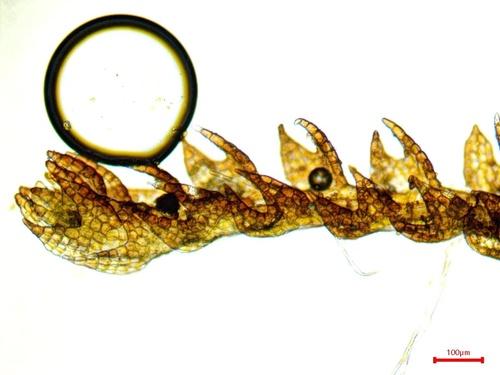
medium.jpg from: https://www.inaturalist.org/taxa/56499-Cephaloziella-rubella
Exploring the Fascinating World of Cephaloziella rubella var. bryhnii Moss
Introduction
Mosses may be small, but they play a big role in many ecosystems around the world. One particularly interesting species is Cephaloziella rubella var. bryhnii (Kaal.) Douin, a tiny but mighty moss in the Cephaloziellaceae family. In this blog post, we’ll take a closer look at this fascinating plant and explore its unique characteristics, habitat, and ecological importance. Get ready to dive into the miniature world of Cephaloziella!
Background
Cephaloziella rubella var. bryhnii is a type of leafy liverwort, which are non-vascular plants in the division Marchantiophyta

42673131.jpg from: https://waarneming.nl/waarneming/view/225300523
. Liverworts are some of the oldest land plants, with fossils dating back over 400 million years. There are over 7000 species of liverworts found all around the world, from the Arctic to the tropics.

VC11-cephaloziella-baumgartneri-netley-dra817-1024×768.jpg from: https://www.britishbryologicalsociety.org.uk/learning/species-finder/cephaloziella-baumgartneri/
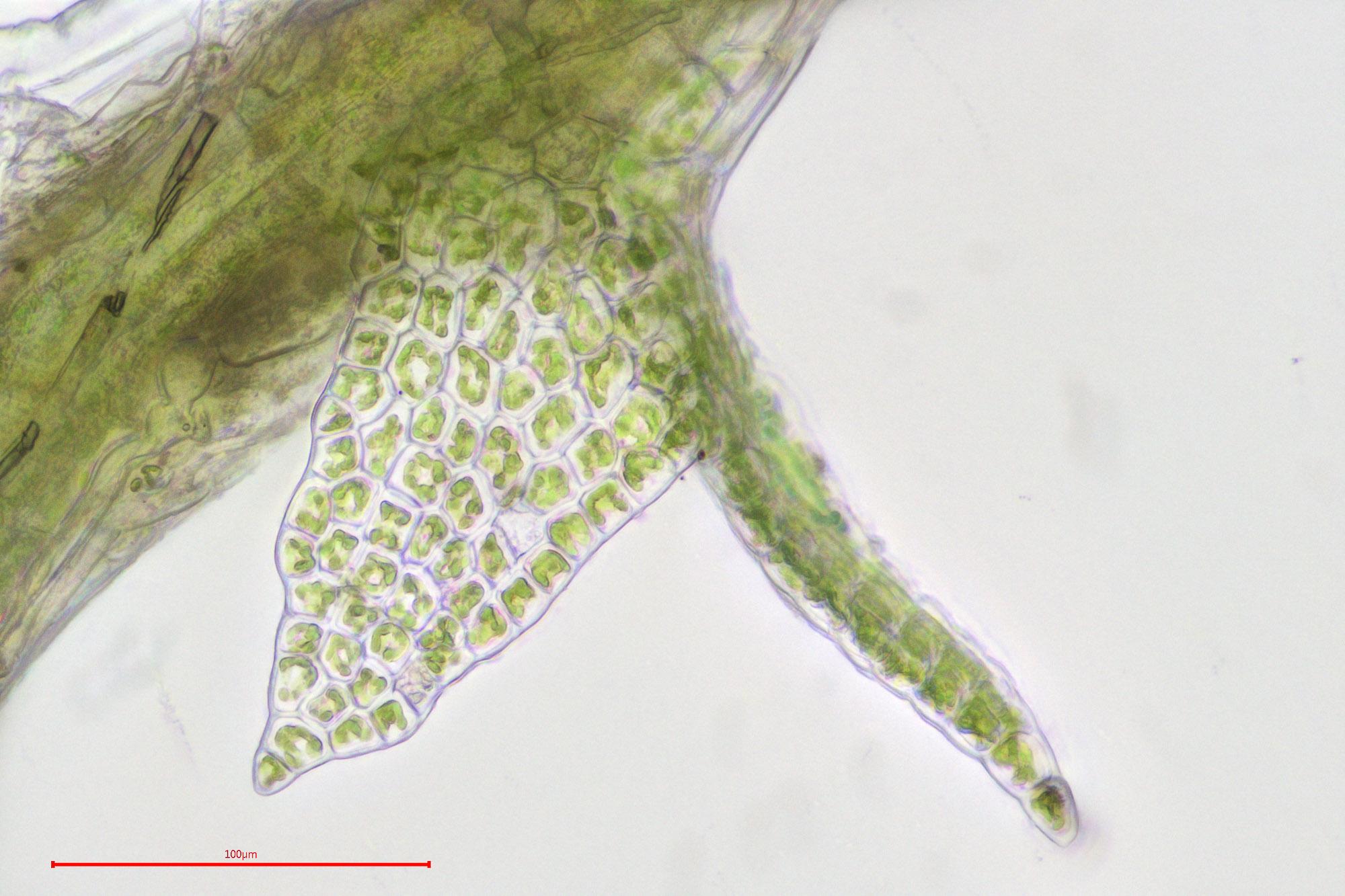
2021-11-09-16-25-05.jpg from: https://www.britishbryologicalsociety.org.uk/learning/species-finder/cephaloziella-hampeana/
Cephaloziella is a genus containing around 90 accepted species. The name comes from the Greek words kephale meaning “head” and ozos meaning “branch”, referring to the branched growth of these tiny plants.
Morphology and Identification
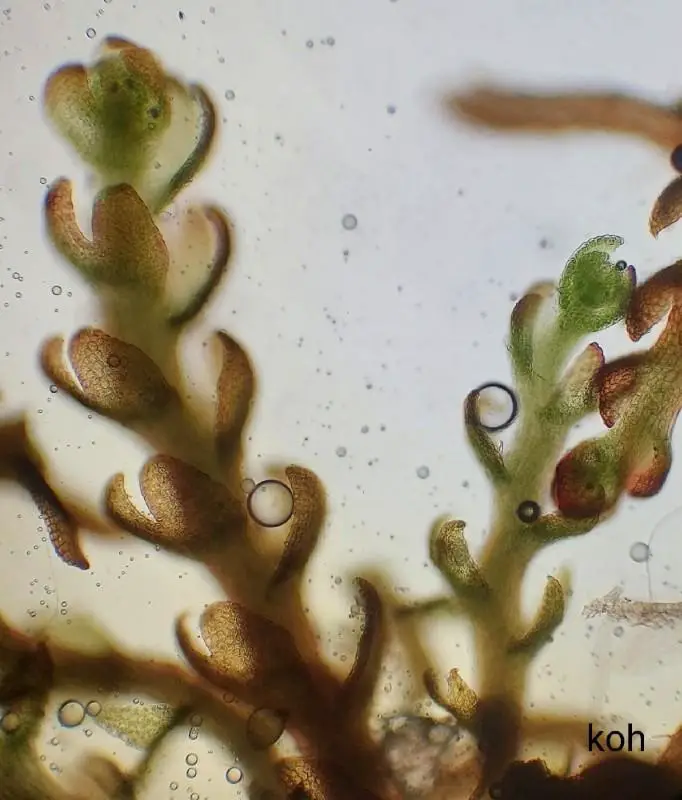
66832547.jpg from: https://waarneming.nl/photos/66832547/
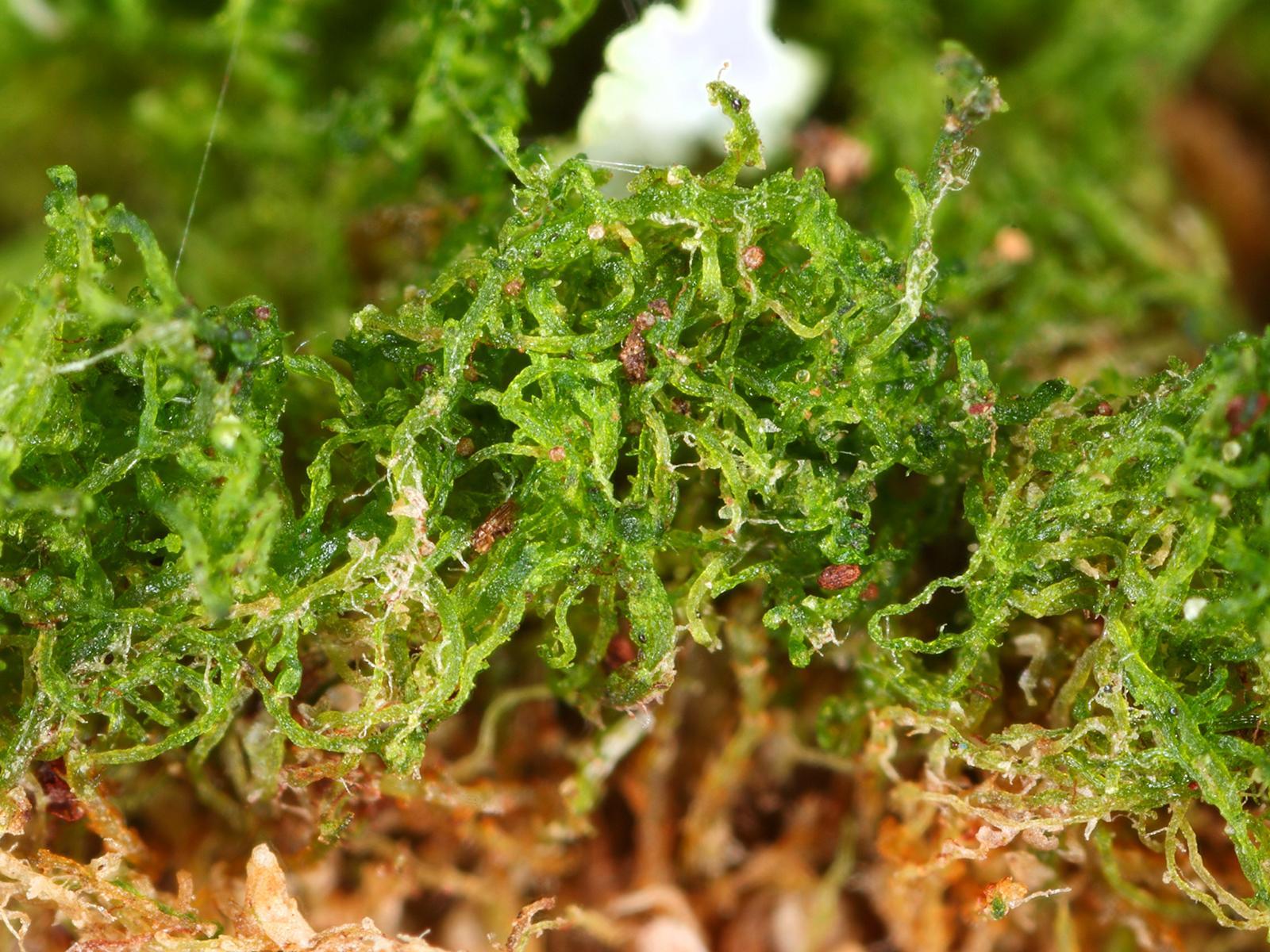
cephaloziella_elachista.jpeg from: https://www.plantsnap.com/plant-encyclopedia/bryophytes/Cephaloziellaceae/cephaloziella-integerrima/
C. rubella var. bryhnii is one of the smallest mosses, with shoots typically only 1-3 mm long. The leaves are miniscule, only 0.2-0.4 mm long, and are divided into two unequal lobes. Leaves are succubously inserted, meaning each leaf slightly underlaps the next.
The underleaves (modified leaves on the underside of the stem) are small to nearly absent. Oil bodies, unique organelles in liverwort cells that contain terpenes and other aromatic compounds, number 4-12 per cell and are granular.
Sporophytes (spore-producing structures) are common, with a round capsule on a translucent white seta
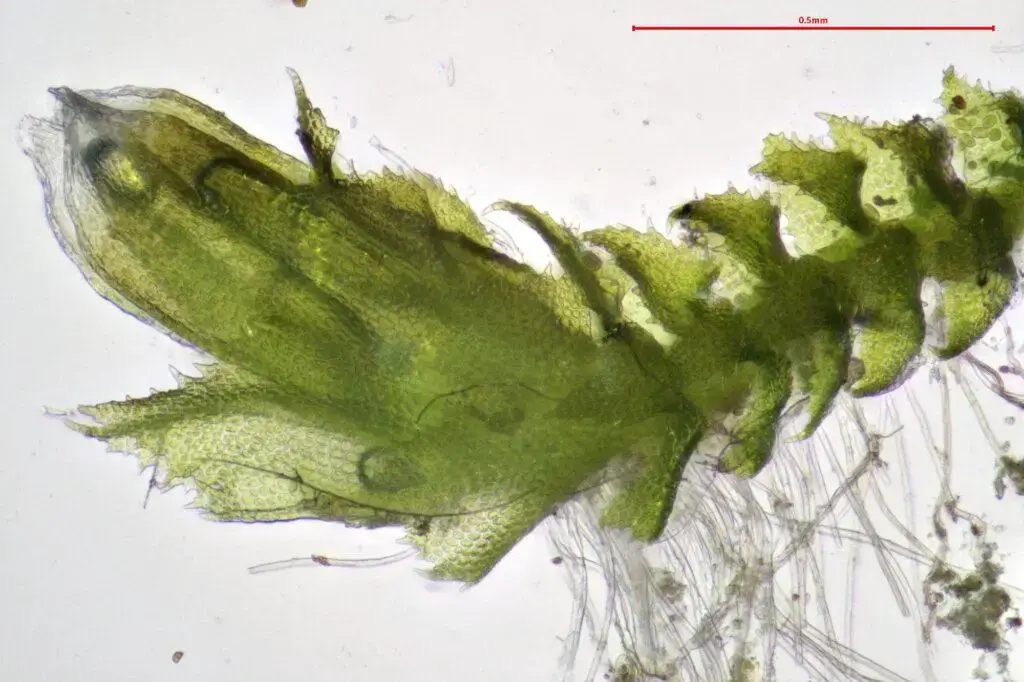
2022-03-30-17-45-22-1024×682.jpg from: https://www.britishbryologicalsociety.org.uk/bryophyte-of-the-month/cephaloziella-turneri/
2-4 mm long. Spores are small, only 6-8 μm.
Global Distribution and Habitat
C. rubella var. bryhnii has a circumboreal distribution, found in northern parts of North America, Europe, and Asia. It grows on soil, decaying wood, tree bases, and rock in various forest types, from lowland to subalpine elevations.
This tiny moss is easily overlooked and is likely more widespread than records indicate. It is one of the few bryophytes that can colonize charred wood after a fire.
Ecological Roles and Adaptations
Despite their small stature, mosses like C. rubella var. bryhnii play important roles in their ecosystems:
- They help retain moisture and prevent erosion
- Provide habitat for micro-organisms and invertebrates
- Contribute to nutrient cycling as they decompose
- Pioneer species that colonize disturbed areas
Cephaloziella mosses are adapted to harsh conditions and disturbance with their small size, abundant spore production, and ability to regenerate from fragments. The aromatic compounds in their oil bodies likely help deter herbivores and pathogens.
Conclusion
The diminutive
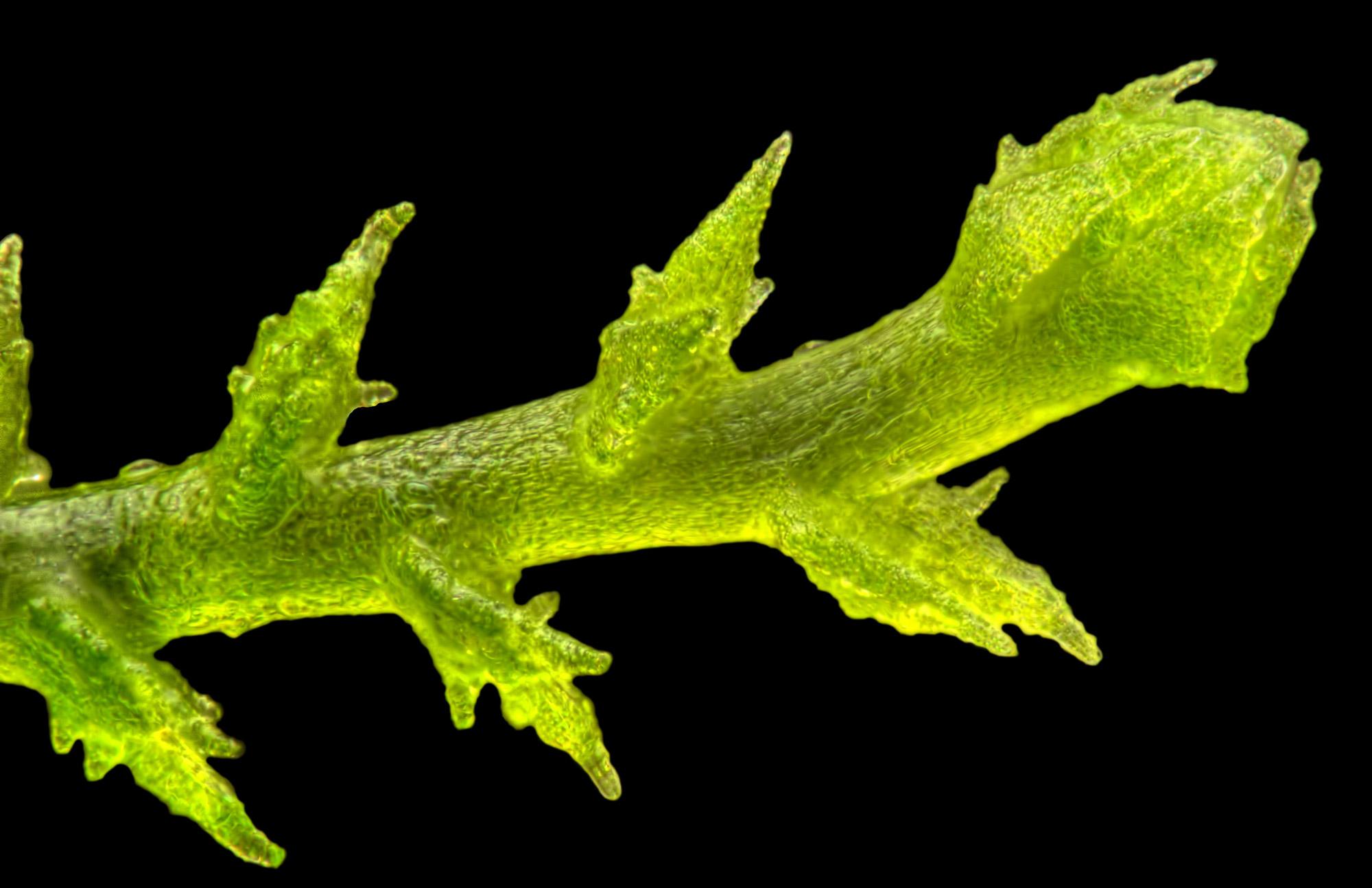
Cephaloziella_nicholsonii-2.jpg from: https://www.britishbryologicalsociety.org.uk/learning/species-finder/cephaloziella-nicholsonii/
Cephaloziella rubella var. bryhnii may be easily overlooked, but it has an outsized ecological impact. From its ancient origins to its global distribution and important roles, this mighty moss proves that size isn’t everything in the natural world.
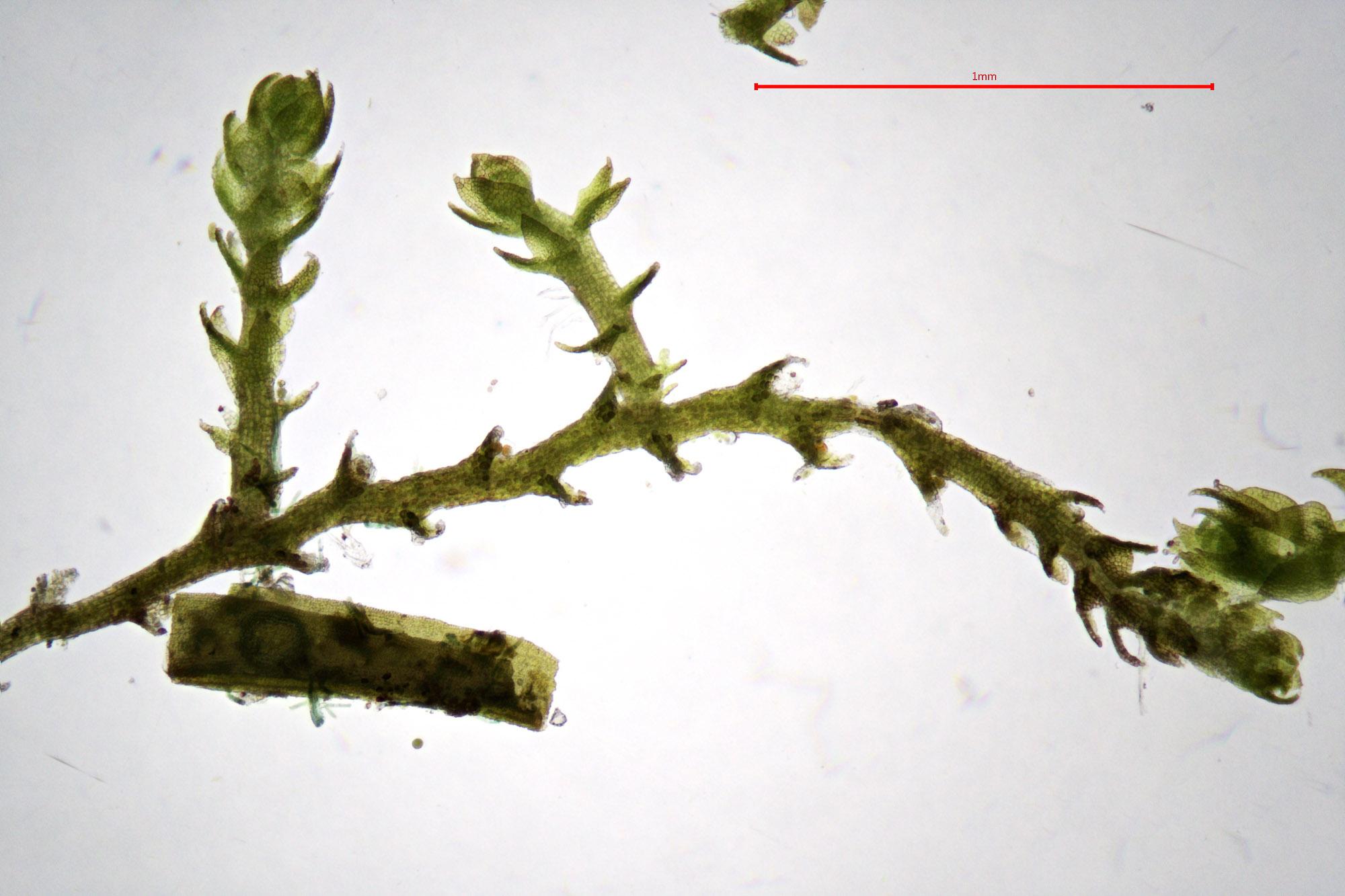
2020-09-17-14-37-42.jpg from: https://www.britishbryologicalsociety.org.uk/learning/species-finder/cephaloziella-divaricata/
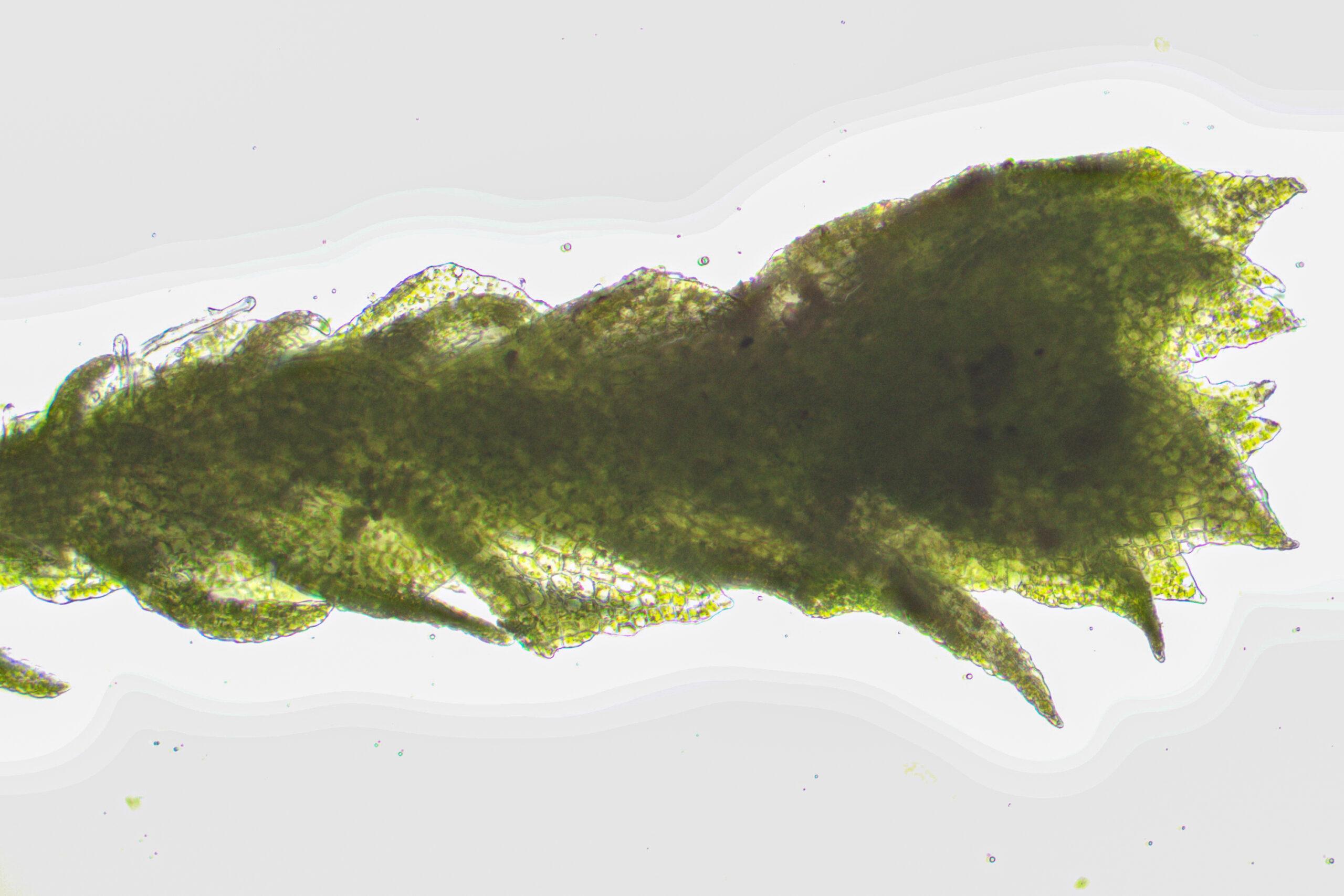
Cephaloziella-stellulifera_VC7023-04-03-15-24-28-scaled.jpg from: https://www.britishbryologicalsociety.org.uk/learning/species-finder/cephaloziella-stellulifera/
Next time you’re out in the woods, take a moment to appreciate the miniature world beneath your feet and the fascinating plants like Cephaloziella that call it home. What other tiny wonders are out there waiting to be discovered?